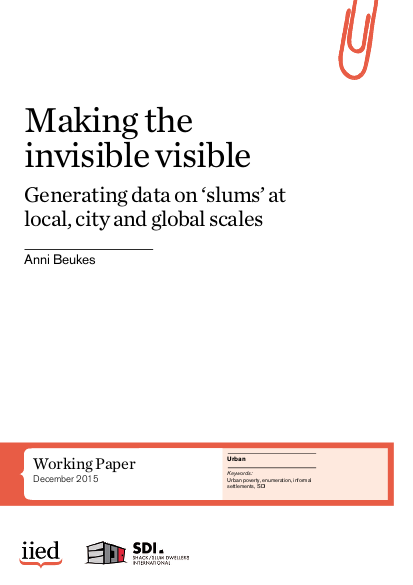
The largest and most detailed set of data about what are termed ‘slums’ or ‘informal settlements’ has been built from enumerations undertaken by the residents of these settlements and their federations. These include settlement profiles, house-by-house surveys and mapping. This has been encouraged and supported by Shack/Slum Dwellers International – to which these federations and their support NGOs are affiliated.
This paper describes how this data set was built and how it is being developed – and the challenges of keeping the process owned by communities but also with the outputs useful for others, including local governments. Doing these settlement enumerations (profiles, surveys and maps) helps mobilise communities and also serves to help them identify collectively the deficits in conditions. Undertaking these enumerations helps produce a sense of belonging to place and space that has powerful bearing in the taking of ownership for its development. They also serve as instruments for advocacy and for opening dialogue with city authority, national and international development partners around slum upgrading and planning.
All the federations that are members of Slum/Shack Dwellers International have agreed to use a common template for settlement profiles. This provides a strong basis through which to compare and contrast different settlements and to aggregate to get city-level statistics. This also contributes to a much more detailed understanding of the scale of informal settlements internationally. This paper also describes the social and technical complexities that the network has had to address in achieving a single, globally accessible data platform for its ‘slum’ data.
Links
Resource collections
- Accountability to affected populations (AAP)
- UN Habitat - Urban Response Collection
- Urban Response - Urban Crisis Preparedness and Risk Reduction
- Urban Response Collection - Community Engagement and Social Cohesion
- Urban Response Collection - Economic Recovery
- Urban Response Collection - Environment and Climate Change
- Urban Response Collection - Housing, Land and Property
- Urban Response Collection - Urban Crisis Response, Recovery and Reconstruction
- Urban Response Collection - Urban Resilience